#History lesson
Explore tagged Tumblr posts
Text
I can sort of see the "free [X]". "Free them from centuries of colonialist oppression and deliberate polarization" (hutu and tutsi were originally probably roughly class-based before colonizers turned them into firm ethnic groups, for instance). In Haiti's case, "free them from the fact that france ransomed them and they were under a de facto global economic boycott and generally fucked up again and again and again and they could have been--should have been--so much more."
seriously. brief overview: haitian slaves became independent. this was great. however, slave-holding states--which were the rich places, generally--decided not to interact with them, lest they give their own slaves ideas. (the haitian revolution stretched over three presidents, washington, adams, and jefferson. washington and jefferson, who owned slaves, supported the french. adams, who did not, supported the haitians). many years later, france essentially ransomed them, demanding 150 million francs, paid in five annual payments of 30 million--six times Haiti's annual revenue at the time--debts which haiti did not finish paying off until 1947, over 120 years later.
so haiti took out a loan. but this burdened them even more.
in the end, france agreed to have haiti pay "only" 90 million francs.
they ended up paying, in total, 112 million francs, or $560 million today.
but that's not all. if the money had stayed haitian, it would have added $21 billion to Haiti's economy over the years.
the haitian gdp today is $13.6 billion.
even only going yearly, $21 billion over 150 years is $140 million per year.
Haiti's budget is only about 11 times that.
other estimates suggest something more like an economy like its neighbors in Latin America--leading a suggestion of $115 billion, or $766 million per year.
Haiti's budget is only twice that.
some years, french profits on this ransom exceeded the rest of haiti's budget.
imagine if the US--if any country--had to pay over half of its revenue to a foreign country.
it would wreck the economy. it would fuck everything up.
Haiti's national bank was taken over by foreigners who crippled the country's ability to govern, keeping them trapped in a cycle of poverty.
France has apologized.
But an apology doesn't make a functioning country.
An apology doesn't fix the centuries-long cycles.
An apology doesn't do a damn thing.
Free haiti.
Free haiti from those debts.
Free haiti from the ransom it's paid, from the ransom it is, in many ways, still paying.
Sometimes I see people make a long list of countries they want to free and often time it just doesn’t make since. Like I see people call for free Haiti in their list sometimes but that doesn’t make sense. Haitis government collapsed and they are stuck in an awful state of anarchy unstableness and constant upheaval. Are you talking about freeing them from the gangs who kinda act as the government? Free them by setting up an actual functioning government. And I see free Sudan but again Sudan is having a civil war between two factions both which such and commit tons of war crimes and are very oppressive. But one is worse than the other in that it is genocidal. So are you calling for the less bad side to win. For no one to win and some other government to set up there some how. Like what exactly do you mean by free these countries what are you hoping for in the end. I’m just confused what you’re advocating for, I understand what free Tibet means it makes sense in that context but for Haiti and Sudan what does it mean.
#haiti#jumblr#free haiti#france#ransom#history#history lesson#fuck colonialism#fuck colonizers#haitian revolution#debt#poverty
108 notes
·
View notes
Text
1963 Refrigerator 🤔
#pay attention#educate yourselves#educate yourself#knowledge is power#reeducate yourself#reeducate yourselves#think about it#think for yourselves#think for yourself#do your homework#do some research#do your own research#ask yourself questions#question everything#american history#history lesson
75K notes
·
View notes
Text
“Nico Di Angelo is a token gay! His coming out scene sucked!” babes I’m BEGGING you to remember 2013 gay characters were not allowed in children’s media.
Lemme say that again: In 2013, it was expected that gay characters would be censored in children’s mass media.
Remember Korra? How she and Asami had to settle for ambiguous handholding rather than a kiss? That was fully a year after House of Hades came out. Nickelodeon said No Gays, the Children™ can’t handle that. Too risky. And people said man that stinks, but that’s how these things go in 2014 America.
Gay marriage was literally still illegal in the vast majority of US states. As of October 8th, 2013 (House of Hades release date) Gay Marriage was only a thing in thirteen fucking states. California had only legalized it that year.
Gay people were still very much on the fringes of society. It was an acceptable political position on both sides of the aisle to be against the existence and equal rights of gay people.
Nico was legitimately a landmark character in queer representation. To my knowledge, there wasn’t before an openly gay main character in a bestselling ya/middle grade fantasy fiction series. It simply was not a thing. They didn’t exist. They weren’t allowed to exist.
I remember people crying. Finally. It was a watershed moment. Kids all across the world finally got someone who represented them. It was such a big fucking deal. And it was controversial!!! Not for the reasons it is today, but because people thought gay kids having representation was inappropriate.
Is Nico’s coming out a great scene? No, these days it leaves a lot to be desired. It’s not perfect by any stretch of the imagination and I’m sure Rick wishes he could change it. But the fact that’s the case is a wonderful reflection of how far we’ve come.
All of your gay heroes in children’s media have Nico Di Angelo to thank. It was important, and good. It deserves to be celebrated, even if we’ve progressed past it since.
#history lesson#rant post#heroes of olympus#nico di angelo#pjo hoo#pjo hoo toa#percy jackson#percy jackon and the olympians#house of hades#solangelo#gay rights#gay romance#lgbt representation#queer representation#queer rep in media#pjo#will solace#heros of olympus#pjo hoo toa tsats#pjo tsats#hoo#legend of korra#korrasami#avatar korra#asami x korra#nico x will
5K notes
·
View notes
Text
Alright, Chanukah starts tonight, which means it's time for me to finally make a post about different kinds of menorahs.
This right here? This is the Temple Menorah:

There's some debate over whether the branches were straight or curved, but here's a few things we do know:
It had seven branches of equal length.
It was made of one solid piece of gold
It was at least five feet tall.
It used pure olive oil.
The Temple Menorah is what people mean when they talk about The Menorah. It's what you'll see on historical or commemorative artifacts such as the Arch of Titus in Rome or Israeli currency:
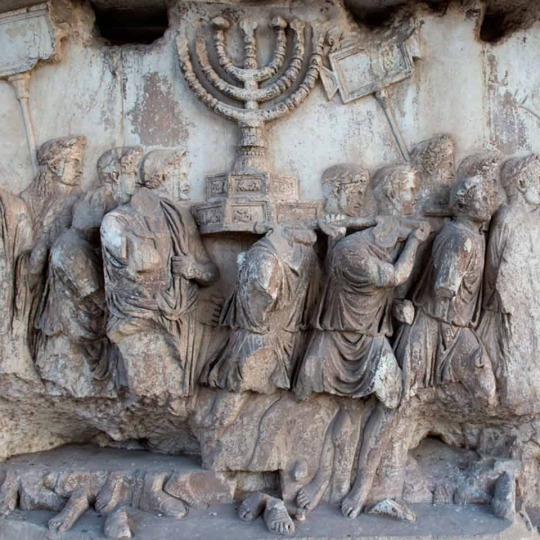

During the time when the Temple stood in Jerusalem, the High Priest lit all seven flames on this Menorah every day (using the aforementioned pure olive oil):

No one lights this on Chanukah.
This is a Chanukah menorah:

There are countless variations, but here are the important things:
It has eight branches of equal length, plus a ninth "helper" branch, known as the shamash, which is set apart from the rest of the branches and used to light the others.
It can be made of any material.
It is usually used with wax candles or oil, but, if necessary, one can use anything that burns.
In Hebrew, this kind of menorah is called a chanukiah.
Some Chanukah menorahs, like the one shown above, have the shamash in the middle. Others have it on the side:

Regardless, this kind of menorah is the one that has been lit by Jews on Chanukah for thousands of years. It's the menorah you'll seen in photographs of Jewish households, including this famous picture taken in Germany in 1931:
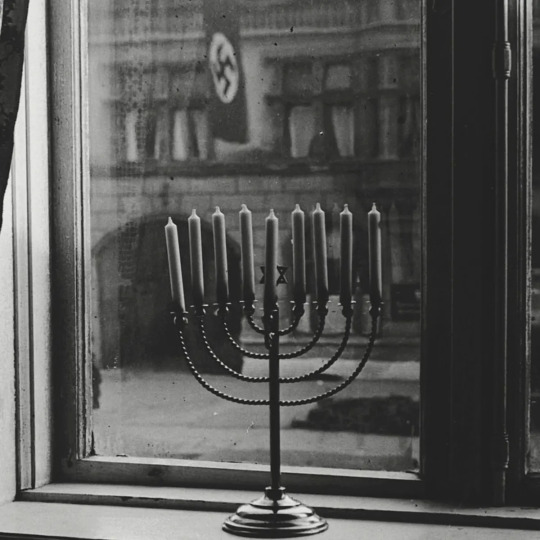
(The message written on the back of the photo reads: "Death to Judah"/ So the flag says/ "Judah will live forever"/ So the light answers)
On Chanukah, whoever is lighting the menorah will first light the shamash, then the number of candles corresponding to whichever night of Chanukah it is. The first night, only the rightmost candle is lit, the second night the two rightmost, etc. (The newest candle is always lit first):

Again, a valid Chanukah menorah has eight branches of equal length, along with a shamash. There is no such thing as a Chanukah menorah with six branches of equal length and a longer seventh branch, and no valid Chanukah menorah has eight branches of completely different lengths.
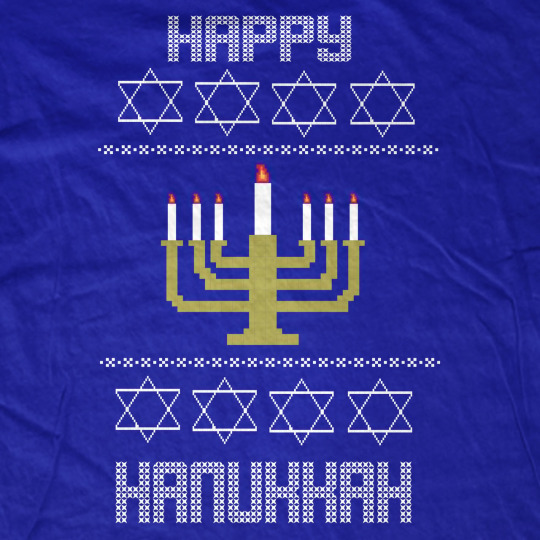

If you see either of the above designs (or anything similar) on Chanukah-themed decor, it tells you the creator has absolutely no idea what they're doing and couldn't be bothered to do more than two seconds of research to make sure their product was accurate. Anyone who knows anything about the holiday will laugh at these. (They may buy them anyway, especially if that's all that's available-- my new Chanukah sweater has an invalid menorah pattern, but it's adorable, so I'm still going to wear it. But I am also laughing about it and invite you all to do the same.)
Anyway, have a happy Chanukah, everyone!
#real life#jumblr#thoughts#menorah#chanukah#hanukkah#arch of titus#history lesson#the more you know#all queued up
7K notes
·
View notes
Text








Murder, kidnappings, and corruption.
These are just some of the best known crimes of anti-communist Peruvian dictator Alberto Fujimori, who has just died. A few months ago he had claimed he would run for president again.
#peru#social justice#current events#human rights#history#history posting#history tumblr#history side of tumblr#history lesson#history lover#history trivia#important#late stage capitalism#western imperialism#political#political posting#politics#world politics#south america#free palestine#gaza#free gaza#gaza strip#palestine#gaza genocide#gazaunderattack#save gaza#venezuela#american politics#war crimes
1K notes
·
View notes
Text
Epic answer by Morgan Freeman 🤔
#pay attention#educate yourself#educate yourselves#wake the fuck up#wake up#do your own research#do your homework#do some research#exposing the truth#knowledge is power#reeducate yourself#ask yourself questions#question everything#morgan freeman#american history#history lesson#history#we're all one#united we stand#divided we fall
2K notes
·
View notes
Text
Here are the radical feminists in a while (because real feminists fought with the definition of "women", because many Cis women did not fit there, so do you think that it will not come back to you?)

Congratulations, radical feminists, you show again that you have never been feminists

Radical feminists do not know how they hurt themselves with their decisions

Most women who recognize "radical feminists" as transgender women are black women

Isn't that charmingly how they destroy each other?

Their crying is so funny

"When the Nazis came for the communists, I was silent I wasn't a communist. When they closed the social democrats, I was silent I wasn't a social democrat. When they came for trade unionists, I didn't protest I wasn't a trade unionist. When they came for Jews, I was silent I wasn't a Jew. When they came for me, there was no one who could protest"

Yes, I will not stop creating these memes, because it's the perfect comment
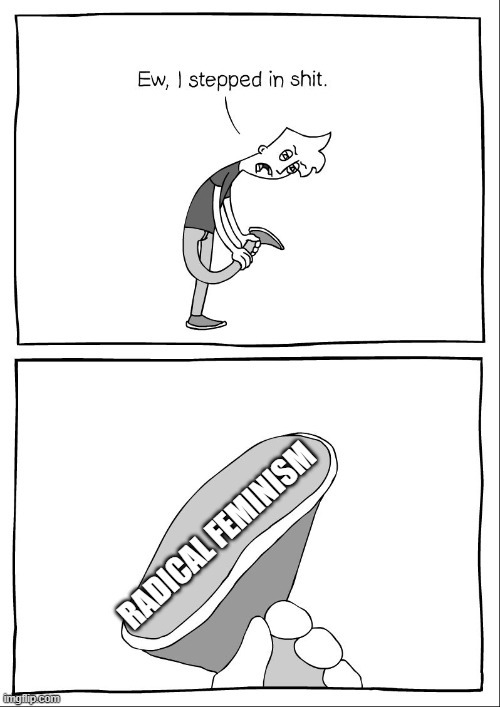
Radical feminism is a disgrace for feminists, which won the rights of women
#radical feminism#feminist#lmao#meme#lgbtq#lgbtqia#queer#pride#fuck facists#anti facist#fuck jk rowling#anti jk rowling#rowlingblr#harry potter#politics#transgender#jk rowling#hp fandom#fuck transphobes#women#united kingdom#trans rights#england#karma is a bitch#history lesson
173 notes
·
View notes
Text
#israel#islam#islamic terrorism#palestine#gaza#imaginary genocide#genocide#hamas terrorism#history lesson#am yisrael chai#israel vs palestine#cat edition#religion#october 7#oct 7 2023#october 7 massacre#fuck hamas#religion is a mental illness
80 notes
·
View notes
Text

61 notes
·
View notes
Text
Jewish people online: someone I know died :(
Goyim online: yayy another dead jew i mean, Zionist! Go back to where you came from!
Yemen (1 jew, imprisoned by Houthies): ...
Poland (ethnically cleansed 99% of the Jewish population in 8 years):

(Not new. 2019, for example:)

Tzur Erlich:
Two memorial days in very close date,
In favour of some calculation
What is the cost of having a state
And what was the cost when we didn't
שני ימי זיכרון סמוכים כל שנה,
לטובת החישוב הכללי
כמה עולה לנו עם מדינה
וכמה עולה לנו ��לי.
(צור ארליך)
(feel free to rb. It's the only way to get more ppl to see it)
#palestine#israel#ethnic cleansing#Poland#tzur Erlich#poetry#antisemitism#jewish history#history lesson#history repeats itself#goyim gonna goy#jumblr#jews#yemen#houthis
443 notes
·
View notes
Text
So, given everything that's happened in recent hours, I thought I might give people who don't know about Gundam some stuff to learn about. Hopefully I can give a balanced and not-racist take like some people.

What is Gundam?
Created by Yoshiyuki Tomino with help by Yoshikazu Yasuhiko and animated by the studio Sunrise (currently Bandai Namco Animation, though I refuse to call them that), the original Mobile Suit Gundam released in 1979 to initially-limited success, though would gain popularity through a combination of fujoshis shipping the characters, the sale of plastic model kits referred to as "Gunpla" and a recut of the series into three compilation movies throughout the early 80's. And as of 2024 is the 66th highest-grossing media franchise of all time, beating out Scooby Doo, Minecraft and the Simpsons.
Also, I'm pretty sure it's what sparked Japanese sci-fi's obsession with O'Neill Cylinders.
The original anime takes place in the year 0079 of the Universal Century, where the Principality of Zeon: a nation composed of orbital space colonies declares a war of independence against the Earth Federation. This "One Year War" has already claimed half the human population by series start and is waged through the use of "Mobile Suits": bipedal mecha powered by a fusion reactor capable of effectively fighting out in the reaches of space.
Main character Amuro Ray is the son of a Federation engineer who lives in an out-of-the-way space colony, though soon finds his home under attack by a Zeon infiltration. After finding the secret Mobile Suit project his father was working on: the RX-78-2 Gundam, he fights off the Zeon invaders, though finds himself and a bunch of other kids conscripted by the Federation to fight the forces of Zeon aboard the ship the White Base. Throughout his journey, Amuro and the Gundam fight many battles against Zeon, including against their mysterious masked ace pilot Char Aznable.
The series was responsible for the codification (but not creation, people get this wrong all the time) of the "Real Robot" subgenre of mecha, where the robots were relatively more realistic and used as weapons of war as opposed to the more fantastical "Super Robot" subgenre pioneered by Mazinger Z and Getter Robo.
A major theme of the show, and the franchise as a whole is "War is bad", as demonstrated through this meme:
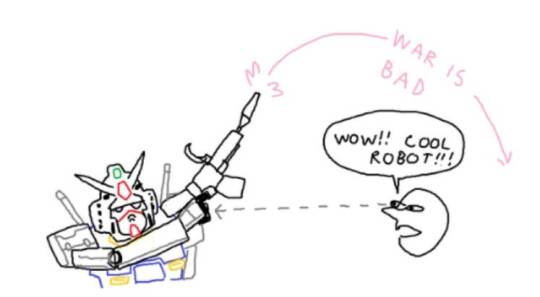
Yes, this is the original version of this meme format.
Anyway, Tomino, a renowned pacifist who grew up in the shadow of Japan's involvement in WW2 tried to use his platform as an anime director to try and tell a story that would get people to realise war's futility and brutality.
So I hear you asking, "That's nice and all, but what about the space lesbians who beat Destiel on their home turf?" Well, let's get into that.
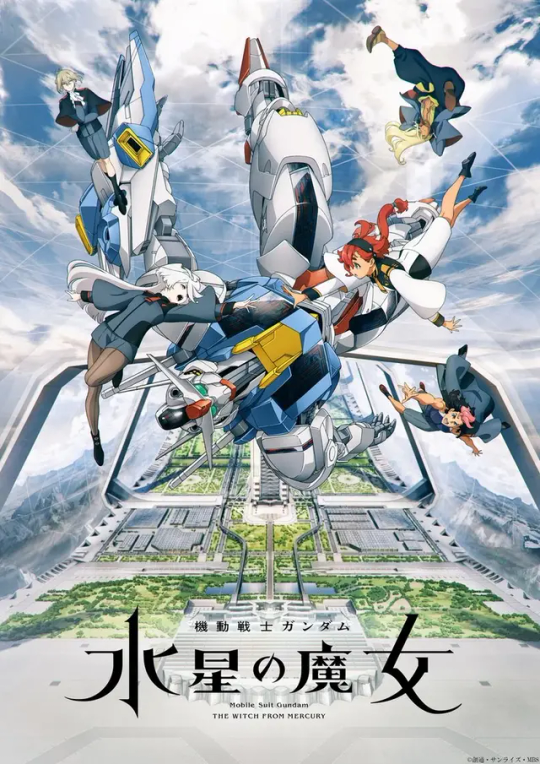
What is the Witch From Mercury?
Mobile Suit Gundam: The Witch from Mercury, or "G-Witch" for short is one of the more recent entries in the Gundam Franchise and a (very) loose adaptation of William Shakespeare's The Tempest. Set in the year 122 Ad Stella, the solar system is under the de facto control of the Benerit Group: a megacorporation with borderline-medieval internal politics that maintains a system of capitalism that benefits Spacians at the expense of those who live on Earth.
Main heroine Suletta Mercury enrolls at Asticassia School of Technology owned by the Benrit Group at the behest of her mother: CEO Prospera Mercury of the Mercury-based Shin Sei Development Corporation, and wins a Mobile Suit duel against a bully in her own MS: the Gundam Aerial. This however means she has now won the hand in marriage of daughter of the Benerit Group CEO: Miorine Rembran, beginning a series of consequences that shape the very political landscape of the solar system.
G-Witch was a massive hit, both critically and commercially. The first episode: the Witch and the Bride attracting record numbers for the studio and the Gunpla kit for the Aerial is currently the best-selling Gunpla kit ever.
Contrary to popular belief, G-Witch is not the first piece of Gundam media to feature a female protagonist. That honour would go to the 2002 Japan-only manga École du Ciel, nor would it have the first queer main character, which goes to 1999's Turn-A Gundam (and if you were to ask any fan of the series, they'd so it goes back to the very beginning). But it became notable for its lesbian representation in anime (in spite of Sunrise's attempts to downplay it, to the anger of the director, writer, producer, artists, animators, cast, fans and even their own parent company Bandai Namco who forced them to back off).
One thing I need to clarify: You don't need to have watched the original series to enjoy G-Witch. They're not even in the same continuity.
So if you're interested in the series and you've only watched G-Witch, I'll give out three recommendations for you all to enjoy:

Mobile Suit Gundam 00
Gundam 00 takes place in the year 2307 (the only series to use our own calendar), where the world is divided between three global superpowers: The Union of Free & Solar Nations (The Americas, Australia, New Zealand and Japan), the Human Reform League (China, South, East, Southeast and Central Asia) and the Advanced European Union (all of Europe, including all of Russia west of the Urals) who each control a space elevator near the equator and wage proxy-wars in Africa and the Middle-East over Earth's dwindling resources. This eventually culminates in the emergence of Celestial Being: a terrorist group consisting of Setsuna F. Seiei, Lockon Stratos, Allelujah Haptism and Tierria Erde, all of whom use powerful "Gundam" Mobile Suits and try to forcefully impose global peace on the Earth.
00 is pretty slow-paced and is more about the world than the individual characters, but said characters are really well-written, especially the characters from the three power blocs who are the de facto protagonists as they try to stop what are in their eyes a bunch of crazed terrorists preaching a hypocritical and incoherent ideology of "peace through force".
And to address the elephant in the room, this series is VERY post-9/11. Constant talks about terrorism, proxy-conflicts in the global south (especially the Middle-East), religious extremism, dwindling resources and the wars fought over them. While the franchise has always been political and of-its-time, you can just tell 00 was made in the mid-2000's. Again, it's good. But just something to keep in mind.

Turn-A Gundam
Turn-A Gundam is one of the weirder elements of the franchise for a myriad of reasons. Not the least of which being its unique setting taking inspiration from the famous sci-fi novel War of the Worlds.
In the Year 2345 of the Correct Century, human civilisation is at a level of technology reminiscent of the late-19th/early 20th centuries, save for the Moonrace on... well, the moon. As part of their queen Diana Soreil's plan to reintegrate both Lunar and Terran societies, several scouts are sent to the planet to set up their return to the planet. One such scout: Loran Cehack integrates into Terran society as a driver for the wealthy Heim family, though at a coming of age ceremony for the family's second daughter, a member of the Moonrace attacks the technologically-inferior Terrans. However, a mysterious mustached statue breaks apart to reveal a "White Doll": the Turn-A Gundam, allowing Loran to fend off the invaders. rest of the series becomes more of a mystery to how the supposedly-peace loving Moonrace could allow of such brutality.
The setting of the Correct Century timeline alone is one of the draws of Turn-A, though its excellent characters and compelling mystery also help a lot.
I do however have two warnings for people interested in watching it. The first is that this series was never dubbed. While it did receive an official sub in 2015, there still isn't a dub for the series. So if that bothers you, there's your warning.
The other is that there's a pretty big twist in the latter part of the series that while I will not spoil it here, it's such a big deal that I can't not mention it. It doesn't make any sense, and it actively detracts from not just the series, but the whole franchise. You'll know it when you see it. It doesn't ruin my enjoyment, but a lot of people don't like Turn-A for that alone.

Mobile Fighter G Gundam
Favourite entry. Don't care. It's peak.
In the Year 60 of the Future Century, war has been abandoned by the nations of humanity in favour of the Gundam fight: a quad-annual fighting tournament between Gundams representative of the countries of the world where the winner rules space until the next Gundam fight, all while leaving the Earth ecologically devastated in the fighting. Neo-Japan's Gundam Fighter: Domon Kasshu arrives on Earth seeking information on his older brother Kyoji, who killed their mother and led to their father's arrest before stealing the experimental Devil Gundam to Earth, beating up every Gundam Fighter in his way. However, he eventually learns of far more dangerous revelations about the incident.
G Gundam is to put it bluntly: bat-shit insane. And I love it. It basically took a look at the then-stagnating franchise in the wake of the wet fart that was Victory Gundam and said "I know what can save this franchise, Bruce Lee movies!" And it somehow worked.
Word of advice: watch it dubbed. Mark Gatha absolutely kills it as Domon every time, and puts just the right amount of ham into every line.
So yeah, that's some stuff on Gundam. This was a long post to write out. I'm gonna take a break now.
#gundam#sulemio#g witch#destiel#ao3topshipsbracket#msg#mobile suit gundam#mobile suit gundam the witch from mercury#tumblr top ship bracket#gundam suisei no majo#supernatural#the witch from mercury#witch from mercury#history lesson
287 notes
·
View notes
Text
instagram
A chilling truth often overlooked in history books: The Arab slave trade was a brutal and inhumane system that lasted for centuries. One of the most horrific practices involved young African boys, aged 8 to 12, who were subjected to castration to prevent reproduction. This barbaric act was often fatal, with an estimated 60% of boys succumbing to the procedure due to blood loss and infection.
Our ancestors endured unimaginable suffering, their bodies mutilated and their spirits broken, all so that a foreign religion could spread. This dark chapter in history is a testament to the resilience of the African people and a stark reminder of the atrocities committed in the name of power and greed.
Let’s honor their sacrifice by educating ourselves and others about this often-silenced history. By understanding the past, we can work towards a more just and equitable future.
Reference:
“The Arab Slave Trade” by Ronald Segal
#history#history lesson#african history#black history#slave trade#police brutality#black lives matter#blacklivesmatter#black people#africa#racial injustice#Instagram
84 notes
·
View notes
Text
Old Lighters 🤔
#pay attention#educate yourselves#educate yourself#knowledge is power#reeducate yourself#reeducate yourselves#think about it#think for yourselves#think for yourself#do your homework#do some research#do your own research#ask yourself questions#question everything#old lighters#lighters#antique#history lesson#history#american history#world history#ancient history
27K notes
·
View notes
Text
I'm just going to leave this here:
Mary IS a black women and that WAS her community-
#Sinners#mary sinners#sinners 2025#hailee steinfeld#come on yall pay attention#how many times do they need to call eachother family?#go see it#michael b. jordan#ryan coogler#history lesson#that 1-drop rule is killing some of yall
38 notes
·
View notes
Text
Shōgun Historical Shallow-Dive: the Final Part - The Samurai Were Assholes, When 'Accuracy' Isn't Accurate, Beautiful Art, and Where to From Here
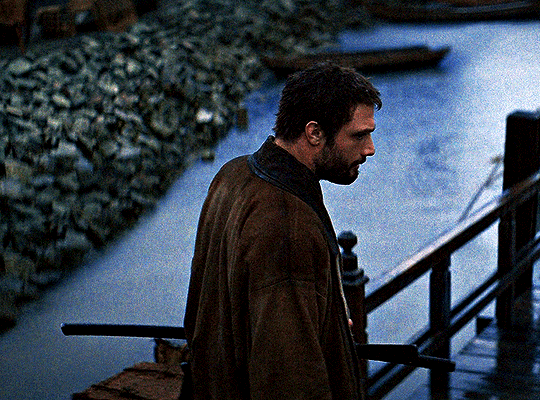
Final part. There is an enormous cancer attached to the samurai mythos and James Clavell's orientalism that I need to address. Well, I want to, anyway. In acknowledging how great the 2024 adaptation of Shōgun is, it's important to engage with the fact that it's fiction, and that much of its marketed authenticity is fake. That doesn't take away from it being an excellent work of fiction, but it is a very important distinction to me.
If you want to engage with the cool 'honourable men with swords' trope without thinking any deeper, navigate away now. Beyond here, there are monsters - literal and figurative. If you're interested in how different forms of media are used to manufacture consent and shape national identity, please bear with me.
I think the makers of 2024's Shōgun have done a fantastic job. But there is one underlying problem they never fully wrestled with. It's one that Hiroyuki Sanada, the leading man and face of the production team, is enthusiastically supportive of. And with the recent announcement of Season 2, it's likely to return. You may disagree, but to me, ignoring this dishonours the millions of people who were killed or brutalised by either the samurai class, or people in the 20th century inspired by a constructed idea of them.
Why are we drawn to the samurai?
A pretty badly sourced, but wildly popular history podcast contends that 'The Japanese are just like everybody else, only more so.' I saw a post on here that tried to make the assertion that the show's John Blackthorne would have been exposed to as much violence as he saw in Japan, and wouldn't have found it abnormal.
This is incorrect. Obviously 16th and 17th century Europe were violent places, but they contained violence familiar to Europeans through their cultural lens. Why am I confidently asserting this? We have hundreds of letters, journals and reports from Spaniards, Portuguese, Dutch and English expressing absolute horror about what they encountered. Testing swords on peasants was becoming so common that it would eventually become the law of the land. Crucifixion was enacted as a punishment for Christians - first by the Taiko, then by the Tokugawa shogunate - for irony's sake.
Before the end of the feudal period, battles would end with the taking of heads for washing and display. Depending on who was viewing them, this was either to honour them, or to gloat: 'I'm alive, you're dead.' These things were ritualised to the point of being codified when real-life Toranaga took control. Seppuku started as a cultural meme and ended up being the enforced punishment for any minor mistake for the 260 years the ruling samurai class acted as the nation's bureaucracy. It got more and more ritualised and flowery the more it got divorced from its origin: men being ordered by other men to kill themselves during a period of chaotic warfare. I've read accounts of samurai 'warriors' during the Edo period committing seppuku for being late for work. Not life-and-death warrior work - after Sekigahara, they were just book-keepers. They had desk jobs.
Since Europe's contact with Japan, the samurai myth has fascinated and appalled in equal measure. As time has gone on, the fascination has gone up and the horror has been dialled down. This is not an accident. This isn't just a change in the rest of the world's perception of the samurai. This is the result of approximately 120 years of Japanese government policies. Successive governments - nationalist, military authoritarian, and post-war democratic - began to lionize the samurai as the perfect warrior ideal, and sanitize the history of their origin and their heydey (the period Shōgun covers). It erases the fact that almost all of the fighting of the glorious samurai Sengoku Jidai was done by peasant ashigaru (levies), who had no choice.
It is important to never forget why this was done initially: to form an imagined-historical ideal of a fighting culture. An imagined fighting culture that Japanese invasion forces could emulate to take colonies and subdue foreign populations in WWI, and, much more brutally, in WWII. James Clavell came into contact with it as a Japanese Prisoner of War.
He just didn't have access to the long view, or he didn't care.
The Original Novel - How One Ayn Rand Fan Introduced Japan to America
There's a reason why 1975's Shogun novel contains so many historical anachronisms. James Clavell bought into a bunch of state-sanctioned lies, unachored in history, about the warring states period, the concept of bushido (manufactured after the samurai had stopped fighting), and the samurai class's role in Japanese history.
For the novel, I could go into great depth, but there are three things that stand out.
Never let the truth get in the way of a good story. He's a novelist, and he did what he liked. But Clavell's novel was groundbreaking in the 70's because it was sold as a lightly-fictionalised history of Japan. The unfortunate fact is the official version that was being taught at the time (and now) is horseshit, and used for far-right wing authoritarian/nationalist political projects. The Three Unifiers and the 'honour of the samurai' magnates at the time is a neat package to tell kids and adults, but it was manufactured by an early-20th century Japanese Imperial Government trying to harness nationalism for building up a war-ready population. Any slightly critical reading of the primary sources shows the samurai to be just like any ruling class - brutal, venal, self-interested, and horrifically cruel. Even to their contemporary warrior elites in Korea and China.
Fake history as propraganda. Clavell swallowed and regurgitated the 'death before dishonour', 'loyalty to the cause above all else', 'it's all for the Realm' messages that were deployed to justify Imperial Japanese Army Class-A war crimes during the war in the Pacific and the Creation of the Greater East Asian Co-Properity Sphere. This retroactive samurai ethos was used in the late Meiji restoration and early 20th century nationalist-military governments to radicalise young Japanese men into being willing to die for nothing, and kill without restraint. The best book on this is An Introduction to Japanese Society by Sugimoto Yoshio, but there is a vast corpus of scholarship to back it up.
Clavell's orientalism strays into outright racism. Despite the novel Shōgun undercutting John Blackthorne as a white savior in its final pages - showing him as just a pawn in the game - Clavell's politics come into play in every Asia Saga novel. A white man dominates an Asian culture through the power of capitalism. This is orthagonal to points 1 and 2, but Clavell was a devotee of Ayn Rand. There's a reason his protagonists all appear cut from the same cloth. They thrust their way into an unfamiliar society, they use their knowledge of trade and mercantilism to heroically save the day, they are remarked upon by the Asian characters as braver and stronger, and they are irresistible to the - mostly simpering, extremely submissive - caricatures of Asian women in his novels. Call it a product of its times or a product of Clavell's beliefs, I still find it repulsive. Clavell invents (nearly from whole cloth, actually) the idea that samurai find money repulsive and distasteful, and his Blackthorne shows them the power of commerce and markets. Plus there are numerous other stereotypes (Blackthorne's massive dick! Japanese men have tiny penises! Everyone gets naked and bathes together because they're so sexually free! White guys are automatically cool over there!) that have fuelled the fantasies of generations of non-Japanese men, usually white: Clavell's primary audience of 'dad history' buffs.
2024's Shōgun, as a television adaptation, did a far better job in almost every respect
But the show did much better, right? Yes. Unquestionably. It was an incredible achievement in bringing forward a tired, stereotypical story to add new themes of cultural encounter, questioning one's place in the broader world, and killing your ego. In many ways, the show was the antithesis to Clavell's thesis.
It drastically reigned in the anachronistic, ahistorical referencees to 'bushido' and 'samurai honor', and showed the ruling class of Japan in 1600 much more accurately. John Blackthorne (William Adams) was shown to be an extraordinary person, but he wasn't central to the outcome of the Eastern Army-Western Army civil war. There aren't scenes of him being the best lover every woman he encounters in Japan has ever had (if you haven't read the book, this is not an exaggeration). He doesn't teach Japanese warriors how to use matchlock rifles, which they had been doing for two hundred years. He doesn't change the outcome of enormous events with his thrusting, self-confident individualism. In 2024's Shōgun, Blackthorne is much like his historical counterpart. He was there for fascinating events, but not central. He wasn't teaching Japanese people basic concepts like how to make money or how to make war.
On fake history - the manufactured samurai mythos - it improved on the novel, but didn't overcome the central problems. In many ways, I can't blame the showrunners. Many of the central lies (and they are deliberate lies) constructed around the concept of samurai are hallmarks of the genre. But it's still important to me to notice when it's happening - even while enjoying some of the tropes - without passively accepting it.
'Authenticity' to a precisely manufactured story, not to history
There's a core problem surrounding the promotion and manufactured discussion surrounding 2024's Shōgun. I think it's a disconnect between the creative and marketing teams, but it came up again and again in advertising and promotion for the show: 'It's authentic. It's as real as possible.'
I've only seen this brought up in one article, Shōgun Has a Japanese-Superiority Complex, by Ryu Spaeth:
'The show also valorizes a supreme military power that is tempered by the pursuit of beauty and the highest of cultures, as if that might be a formula for peace. Shōgun displays these two extremes of the Japanese self, the savagery and the refinement, but seems wholly unaware that there may be a connection between them, that the exquisite sensibility Japan is famous for may flow from, and be a mask for, its many uses of atrocious domination.'
Here we come to authenticity.
'The publicity surrounding the series has focused on its fidelity to authenticity: multiple rounds of translation to give the dialogue a “classical” feel; fastidious attention to how katana swords should be slung, how women of the nobility should fold their knees when they sit, how kimonos should be colored and styled; and, crucially, a decentralization of the narrative so that it’s not dominated by the character John Blackthorne.'
It's undeniable that the 2024 production spent enormous amounts of energy on authenticity. But authenticity to what? To traditional depictions of samurai in Japanese media, not to history itself. The experts hired for gestures, movement, costumes, buildings, and every other aspect of the show were experts with decades in experience making Japanese historical dramas 'look right', not experts in Japanese history. But this appeal to 'Japanese authenticity' was made in almost every piece of promotional material.
The show had only one historical advisor on staff, and he was Dutch. The numerous Japanese consultants, experts and specialists brought on board (talked about at length in the show's marketing and behind the scenes) were there to assist with making an accurate Japanese jidaigeki. It's the difference between hiring an experienced BBC period drama consultant, and a historian specialising in the Regency. One knows how to make things look 'right' to a British audience. The other knows what actually happened.
That's fine, but a critical viewing of the show needs to engage with this. It's a stylistically accurate Japanese period drama. It is not an accurate telling of Japanese history around the unification of Japan. If it was, the horses would be the size of ponies, there would be far more malnourished and brutalised peasants, the word samurai would have far less importance as it wasn't yet a rigidly enforced caste, seppuku wouldn't yet be ritualised and performed with as much frequency, and Toranaga - Tokugawa - would be a famously corpulently obese man, pounding the saddle of his horse in frustration at minor setbacks, as he was in history.
The noble picture of restraint, patience, refinement and honour presented by Hiroyuki Sanada as Toranaga/Tokugawa is historical sanitation at its most extreme. Despite being Sanada's personal hero, Tokugawa Ieyasu was a brutal warlord (even for the standards of the time), and he committed acts of horrific cruelty. He ordered many more after gaining ultimate power. Think a miniseries about the Founding Fathers of the United States that doesn't touch upon slavery - I'm sure there have been plenty.
The final myth that 2024's Shōgun leaves us with is that it took a man like Toranaga - Tokugawa Ieyasu - to bring peace to a land ripped assunder by chaos. This plays into 19th century notions of Great Man History, and is a neat story, but the consensus amongst historians is if it wasn't Tokugawa, it would have been some other cunt. In many cases, it very nearly was. His success was historical contingency, not 5D chess.
So how did this image get manufactured, to the point where the Japanese populace - by and large - believes it to be true? Very long story short: after a period of rapid modernisation, Japan embraced nationalism in the late 19th century. It was all the rage. Nationalism depends on a glorified past. The samurai (recently the pariahs of Japanese history) were repurposed as Japan's unique warrior heroes, and woven into state education. This was especially heated in the 1920s and 30s in the lead up to the invasion of Manchuria and Japan's war of aggression in the Pacific. Nationalism + militarism = the modern Japanese samurai myth, to prepare men to obey orders unquestioningly from a military dictatorship.
This persists in the postwar period. Every year since 1963, Japan's state broadcaster NHK commissions a historical drama - a Taiga Drama, where many of this show's actors got their starts - that manufactures and re-enforces the idea of samurai as noble, artful, honourable people. Read a book - read a Wikipedia article! - and you'll see that most of it stems from Tokugawa-shogunate era self-propaganda. It's much like the European re-interpretation of chivalry. In Europe's case, chivalry in actual history was a set of guidelines that allowed for the sanctioned mass-rape and murder of civilians, with a side of rules regarding the ransoming of nobles in scorched-earth military campaigns. In Japan's case, historical figures that regularly backstabbed each other, tortured rival warriors and their lessers, and inflicted horrific casualties on the peasants that they owned (we have a term for that) are cast as noble, honourable, dedicated servants of the Empire.
Why does this matter to me? Samurai movies and TV shows are just media, after all. The issue, for me, is that the actors, the producers - including Hiroyuki Sanada - passionately extoll 'accuracy' as if they genuinely believe they're telling history. They talk emotionally about bushido and its special place in Japanese society.
But the entire concept of bushido is a retroactive, post-conflict, samurai construction. Bushio is bullshit. Despite being spoken of as the central tenet of 2024's Shōgun by actors like Hiroyuki Sanada, Tadanobu Asano, and Tokuma Nishioka, it simply didn't exist at the time. It was made up after the advent of modern nationalism.
It was used to justify horrendous acts during the late Edo period, the Meiji restoration, and the years leading up to the conclusion of Japan's war of aggression in the Pacific. It's still used now by Japan's primarily right-wing government to deny war crimes and justify the horrors unleashed on Asia and the Pacific during World War II as some kind of noble warrior crusade. If you ever want your stomach turned, visit the museum attached to Yasukuni Shrine. It's a theme park dedicated to war crimes denial, linked intimately to Japan's imagined warrior past. Whether or not the production staff, cast, and marketing team of 2024's Shōgun knew they were engaging with a long line of ahistorical bullshit is unknown, but it is important.
It's also important to acknowledge that, having listened to many interviews with Rachel Kondo and Justin Marks, they were acutely aware that they weren't Japanese, to claim to be telling an authentically Japanese story would be wrong, and that all they could do was do their best to make an engaging work that plays on ideas of cultural encounter and letting go. I think the 'authenticity!' thing is mostly marketing, and judicious editing of what the creators and writers actually said in interviews.
So... you hate the show, then? What the hell is this all about?
No, I love the show. It's beautiful. But it's a beautiful artwork.
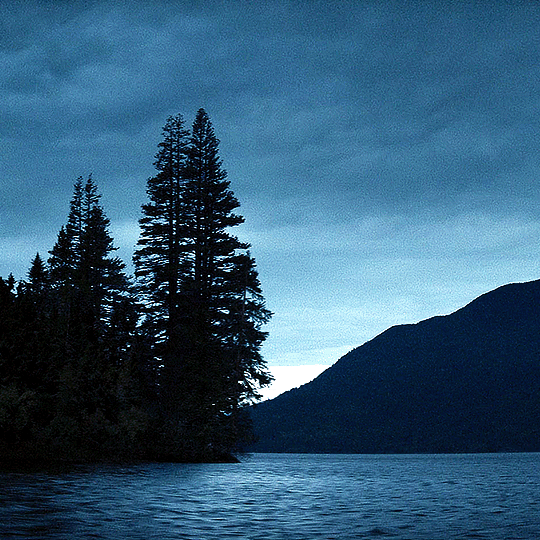
Just as the noh theatre in the show was a twisting of events within the show, so are all works of fiction that take inspiration from history. Some do it better than others. And on balance, in the show, Shōgun did it better than most. But so much of the marketing and the discussion of this adaptation has been on its accuracy. This has been by design - it was the strategy Disney adopted to market the show and give it a unique viewing proposition.
'This time, Shōgun is authentic!*
*an authentic Japanese period drama, but we won't mention that part.
And audiences have conflated that with what actually happened, as opposed to accuracy to a particular form of Japanese propaganda that has been honed over a century. This difference is crucial.
It doesn't detract from my enjoyment of it. Where I view James Clavell's novel as a horrid remnant of an orientalist, racist past, I believe the showrunners of 2024's Shōgun have updated that story to put Japanese characters front and centre, to decentralise the white protagonist to a more accurate place of observation and interest, and do their best to make a compelling subversion of the 'stranger in a strange land' tale.
But I don't want anyone who reads my words or has followed this series to think that the samurai were better than the armed thugs of any society. They weren't more noble, they weren't more honourable, they weren't more restrained. They just had 260 years in which they worked desk-jobs while wearing two swords to write stories about how glorious the good old days were, and how great people were.
Well... that's a bleak note to end on. Where to from here?
There are beautiful works of fiction that engage much closer with the actual truth of the samurai class that I'd recommend. One even stars Hiroyuki Sanada, and is (I think) his finest role.
I'd really encourage anyone who enjoyed Shōgun to check out The Twilight Samurai. That was the reality for the vast majority of post-Sekigahara samurai
For something closer to the period that Shogun is set, the best film is Seppuku (Hara-Kiri in English releases). It is a post-war Japanese film that engages both with the reality of samurai rule, and, through its central themes, how that created mythos was used to radicalise millions of Japanese into senseless death during the war. It is the best possible response to a romanticisation of a brutal, hateful period of history, dominated by cruel men who put power first, every single time.
I want to end this series, if I can, with hope. I hope that reading the novel or watching the 1980 show or the 2024 show has ignited in people an interest in Japanese culture, or society, or history. But don't let that be an end. Go further. There are so many things that aren't whitewashed warlords nobly killing - the social history of Japan is amazing, as is the women's history. A great book for getting an introduction to this is The Japanese: A History in 20 Lives.
And outside of that, there are so many beautiful Japanese movies and shows that don't deal with glorified violence and death. In fact, it makes up the vast majority of Japanese media! Who would have thought! Your Name was the first major work of art to bridge some of the cultural animosity between China and Japan stemming from WW2, and is a goofy time travel love story. Perfect Days is a beautiful movie about the simple joy of living, and it's about the most Tokyo story you can get.
Please go out, read more, watch more. If you can, try and find your way to Japan. It's one of the most beautiful places on earth. The people are kind, the food is delicious, and the culture is very welcoming to foreigners.
2024's Shōgun was great, but please don't let that be the end. Let it be the beginning, and I hope it serves as a gateway for you.
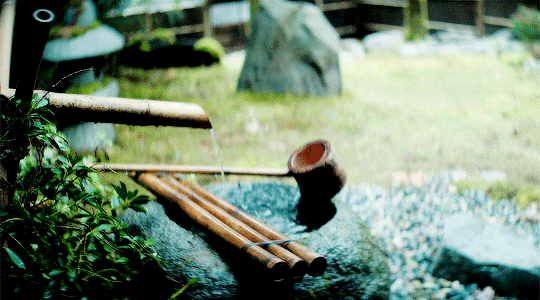
And I hope our little fandom on here remembers this show as a special time, where we came together to talk about something we loved. I'll miss you all.
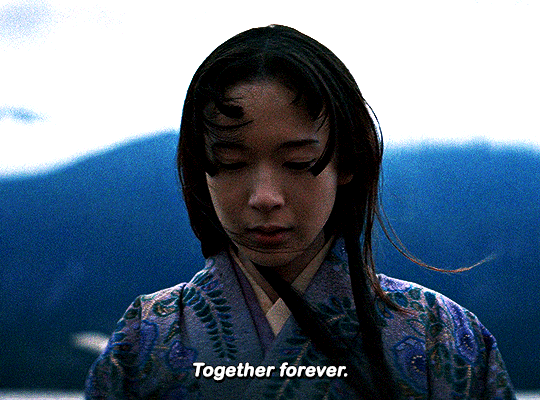
#shōgun#shogun#shogun fx#toda mariko#john blackthorne#anjin#adaptationsdaily#perioddramasource#hiroyuki sanada#yoshii toranaga#akechi mariko#history#history lesson#japan#world war ii#japanese culture#tokugawa ieyasu#hosokowa gracia#william adams#sengoku jidai#writer stuff#book adaptation#women in history#social history#period drama
175 notes
·
View notes
Text


The JFK files reveal tactics used by the CIA to influence regime change in Cuba Recently released documents indicate that the CIA conspired to cause crop failure in Cuba, with the intention of collectively punishing the civilian population to pressure the socialist government of Fidel Castro at the time.
Source: MintPress
#current events#human rights#social justice#cuba#cubana#cuban#cuban history#cuban revolution#history#history posting#history tumblr#history side of tumblr#history lesson#history lovers#usa#jfk#jfk files#news#breaking news#world news#cia#john f kennedy#cold war era#cold war history#Cold War#military history
586 notes
·
View notes